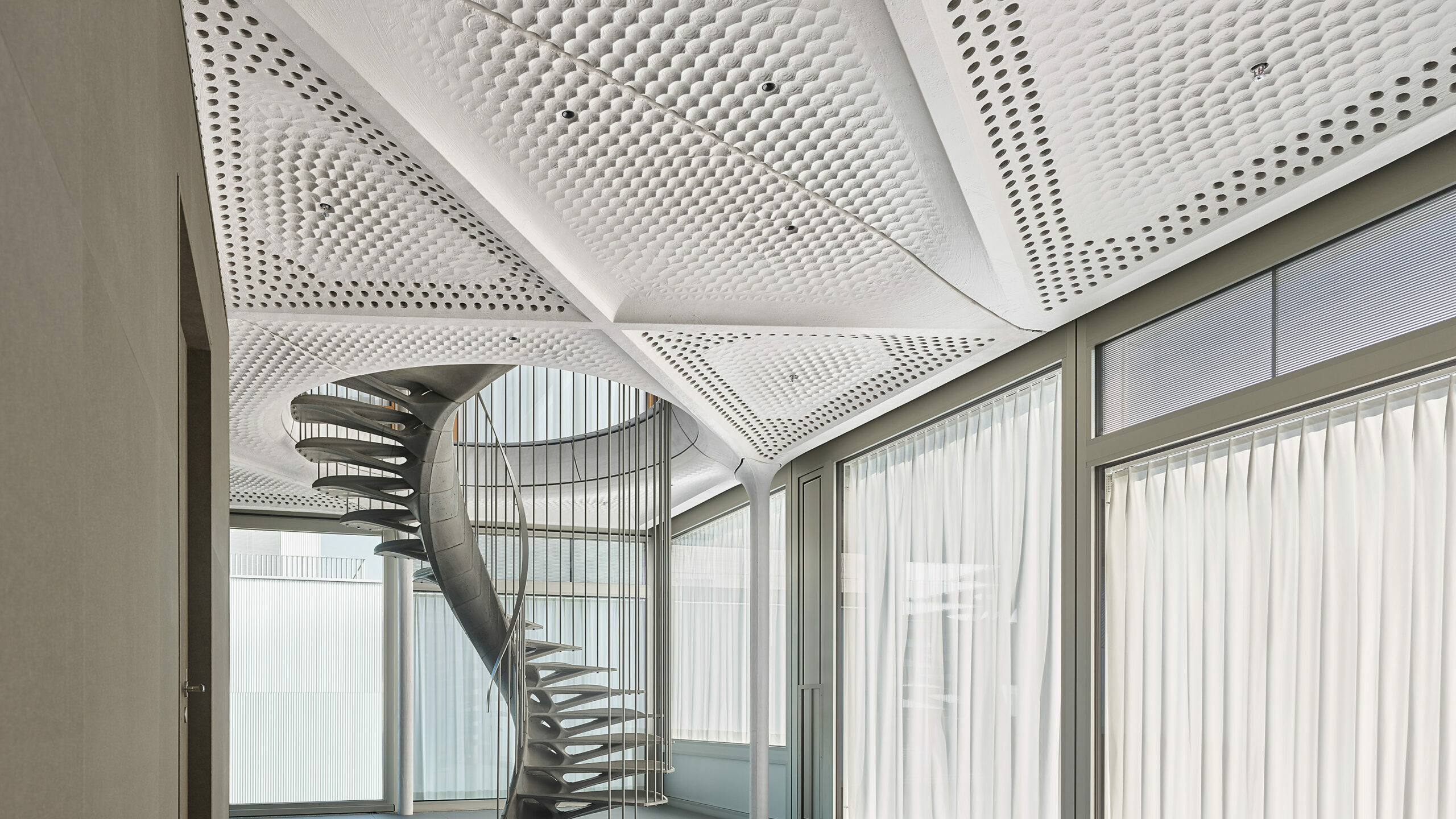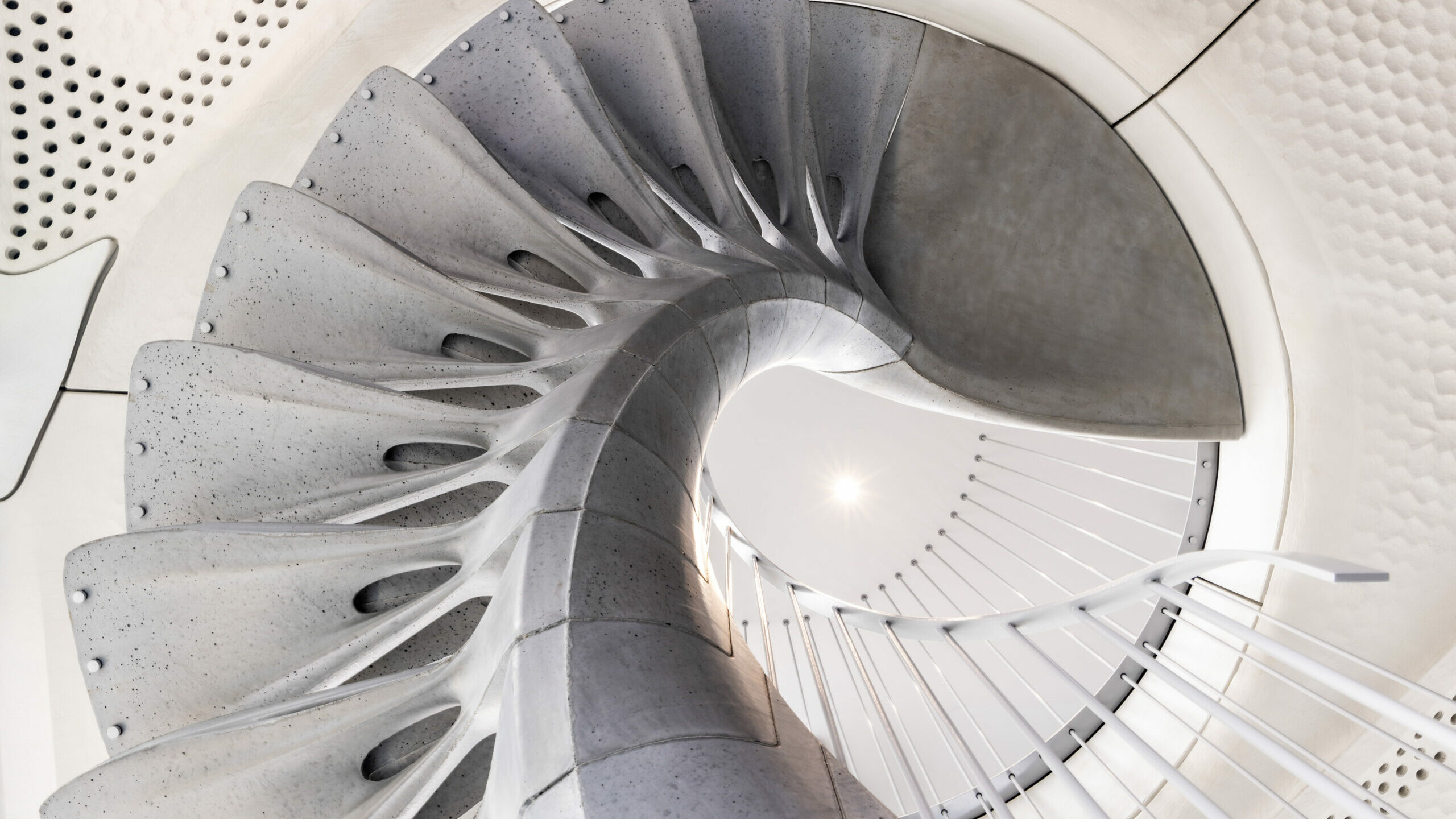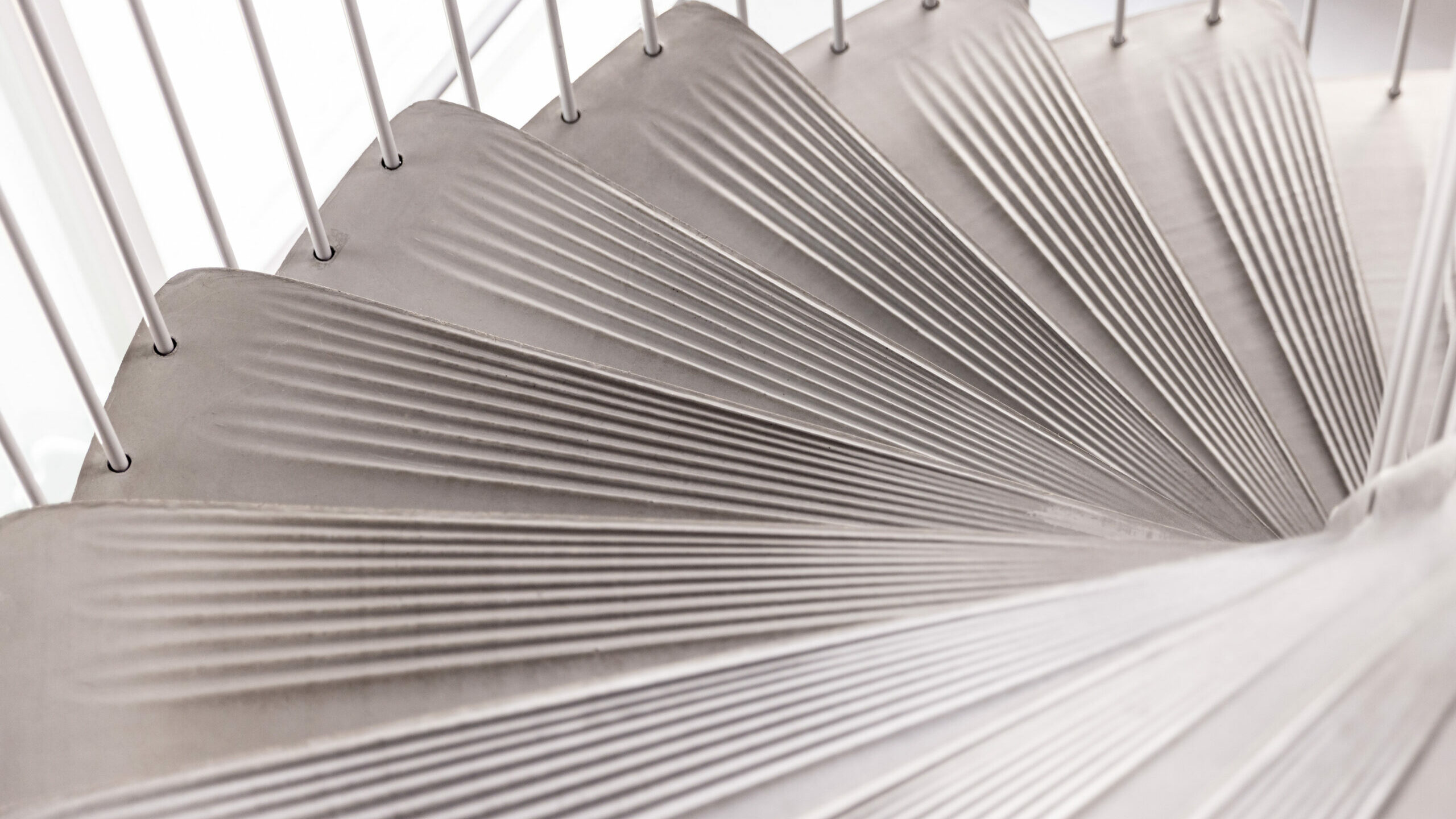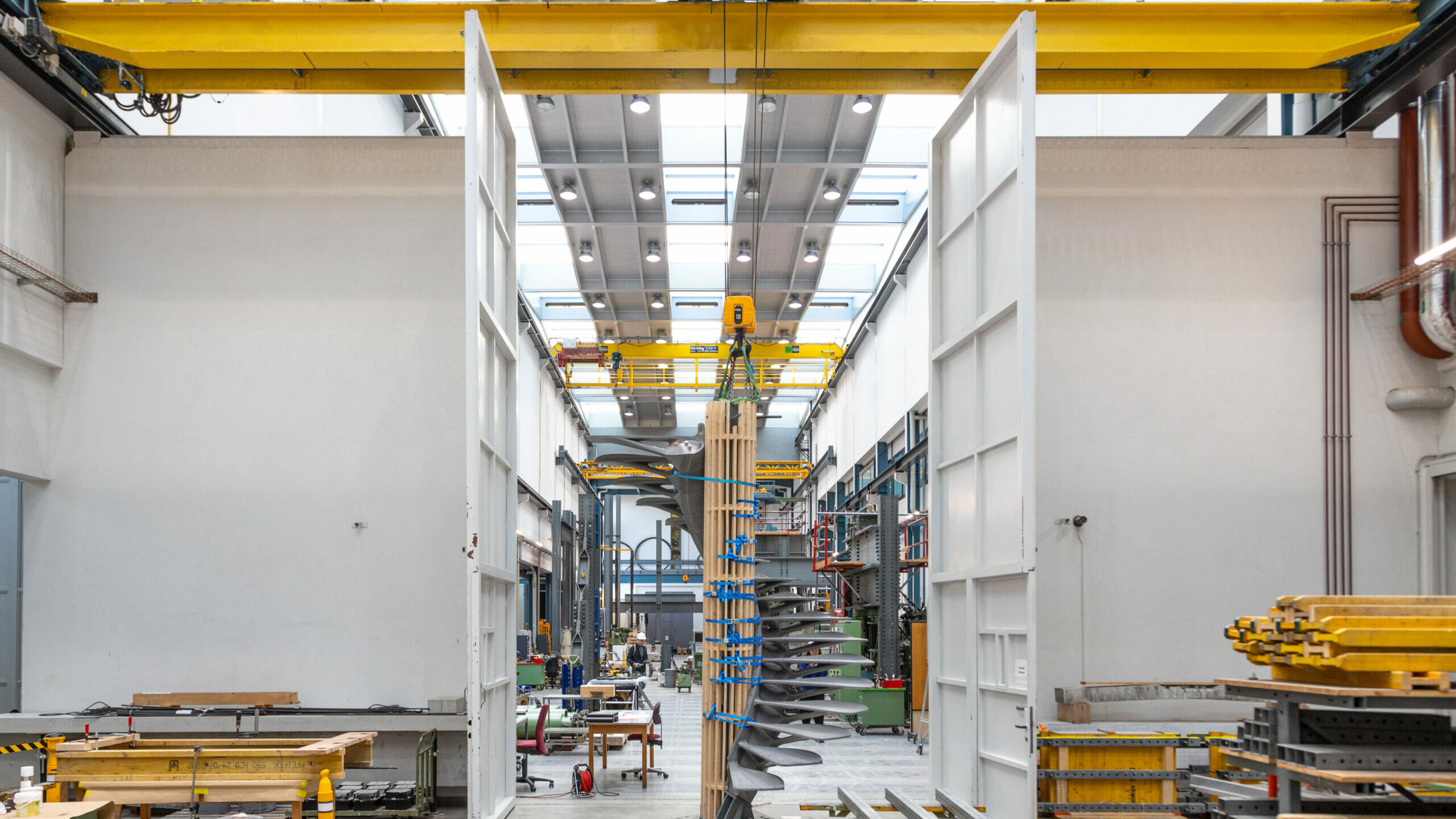Cadenza is a helical concrete stair installed in the BASF office STEP2 Unit at NEST in Dübendorf for Empa and Eawag. The stair shows how cutting-edge engineering and fabrication technology enable bespoke designs with radically new aesthetics that efficiently use high-performance materials.
The stair demonstrates a structurally optimised use of material, with steps less than 20 mm thick and weighing only 45 kg. The efficiency is further enhanced by the concentration of reinforcement in three memory®-steel post-tensioning bars located in the load-bearing stringer. The complex geometry of the 16 concrete steps was achieved using a single set of reusable 3D-printed formworks. The steps and the landing were designed to be assembled with dry connections only, making the tectonic concept compatible with refurbishments and circular economy architecture, being modular, and ready to be dismantled and reassembled.
Motivation
A drawback of 3D-printed formwork is the waste associated with one-time-use disposable moulds. To address this, Cadenza relies on reusable 3D-printed formworks for discrete concrete steps. In this scenario, a single set of moulds for one step is sufficient for producing multiple flights of stairs. To maximise geometric freedom and reduce weight, the stair is cast in fibre-reinforced concrete without conventional reinforcement bars. The stair also pioneers an innovative tectonic concept for assembling the discrete steps. Relying on dry connections only, the assembly is reversible and applicable even in structurally challenging typologies, such as helical stairs.
Tectonic concept
Cadenza showcases an innovative tectonic concept based on post-tensioned prefabricated concrete steps. All steps are identical and consist of an 18 mm stepping surface cantilevering 1 m from a central helical core, or stringer, where most of the mass is concentrated. The cores of the discrete steps are dry stacked along interlocking interfaces to form a helical structural newel that is prestressed.
The discrete steps are assembled with dry connections and interlock with shear keys. The interfaces between adjacent steps have a planar surface perpendicular to the post-tensioning force, aligning with the helical axis of the stringer.
The post-tensioning system consists of three pre-bent shape-memory steel bars located in the newel. These pre-strained bars are clamped at the ends, heated to 305°C and cooled slowly, generating the post-tensioning stress in the stair. The temperature is reached through electrical resistive heating, a process that only requires minimal access for copper wire connections to a generator.
Design
Cadenza consists of 16 steps rising counter-clockwise and a two-part landing, spanning 3.1 m floor-to-floor, with a diameter of 2.6 m. The stair meets safety, accessibility, and comfort requirements. The computational design workflow can generate different stair typologies (straight, winder, helical, spiral, etc.) based on comfort considerations, geometric and design guidelines, fabrication requirements, and 3D printing constraints. The final geometry of the stair is refined through iterative Catmull-Clark subdivisions, applied selectively to highlight sharp creases in the design that define the formwork segmentation and enhance the aesthetic of the stair.
The resulting topology is designed to reduce material while ensuring a structurally efficient load transfer. The finished steps weigh only 45 kg, nearly 60% lighter than conventional monolithic concrete steps.
Fabrication
The fabrication strategy aimed to reuse the formwork for all the repetitive parts of the stair. Thus, a single set of formworks was reused for all 16 identical steps. To facilitate demoulding, the formwork was segmented into seven parts, assembled using threaded metal rods.

The formwork was 3D-printed in polyethylene terephthalate (PET) reinforced with 15% carbon fibre for improved tensile strength. Interfaces with concrete were coated with a layer of polyurethane that produced a smooth concrete surface with no visible traces of 3D printing layers.
For precise assembly, the formwork featured pyramidal referencing pins and sealing grooves. Additionally, the formwork provided precise details for preventing accidental slips, assembling the railing and transferring loads at the interfaces.
The stair was cast in a ultra-high-performance concrete mix reinforced with 10-mm-long steel fibres, which enabled filigree features and an ultra-lightweight design. The cast steps were assembled and prestressed in a workshop off-site supported by a temporary timber core, which facilitated transportation to its final position.

The increased scrutiny over the environmental impact of concrete underscores the urgent need for sustainable practices within the building industry. Yet, addressing this challenge must extend beyond purely technical, material advancements into a broader range of considerations involved in concrete construction. The Cadenza stair is a pilot research project that stands out as an ambitious and complex design only feasible with 3D printing technologies. Future applications that reduce design and structural complexity while investigating smarter systems of adaptive 3D-printed formworks could make concrete free-form stairs more aligned with circular economy principles and more viable as a scalable construction method.

















